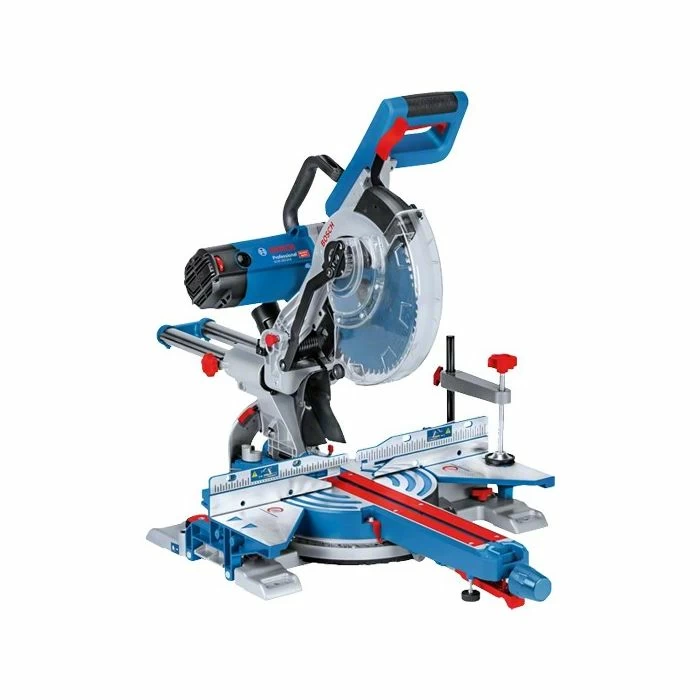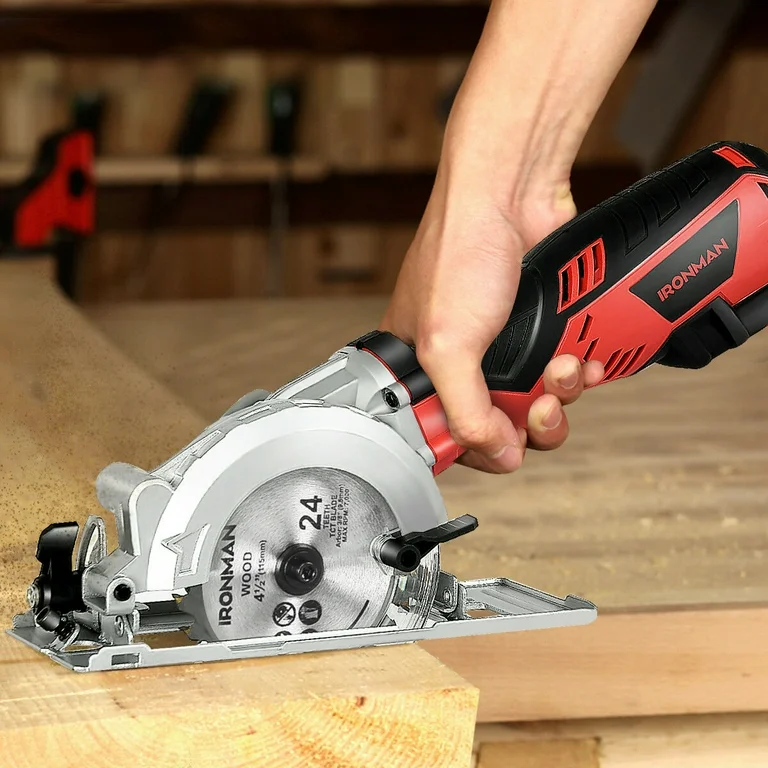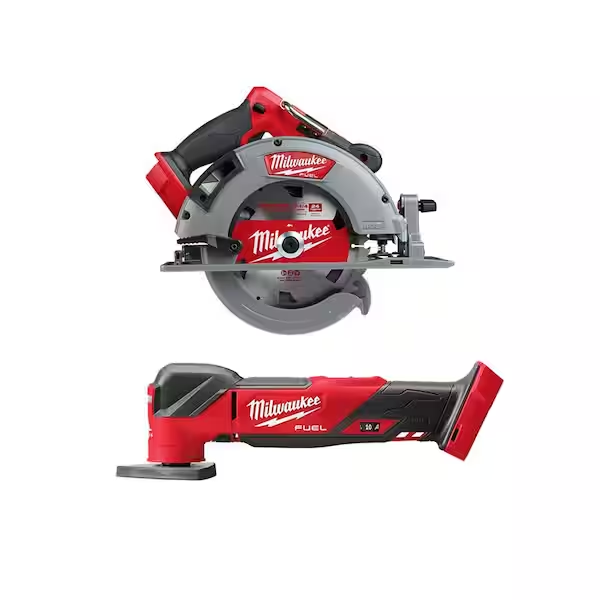
Power Saws: Efficiency, Precision, and Versatility in Cutting
What Are Power Saws?
Power saws revolutionize the world of cutting, offering unparalleled efficiency and precision. These electric or battery-operated tools come in various types, each designed for specific cutting tasks. Circular saws, reciprocating saws, jigsaws, and miter saws represent just a few examples of the diverse power saw family. These tools utilize motorized blades to cut through materials like wood, metal, plastic, and even masonry. Power saws significantly reduce the time and effort required for cutting tasks compared to manual saws. They provide consistent, clean cuts and allow users to tackle large-scale projects with ease.
The power source drives the blade, which moves at high speeds to slice through materials quickly and accurately. Most power saws feature adjustable settings for depth and angle of cut, enhancing their versatility. Safety features such as blade guards and trigger locks come standard on many models. Power saws cater to both professional contractors and DIY enthusiasts, offering options for various skill levels and project requirements. These tools have transformed industries like construction, woodworking, and manufacturing by increasing productivity and precision. As technology advances, power saws continue to evolve, incorporating features like laser guides and dust collection systems for improved performance and user experience.

The Benefits of Using Power Saws
Power saws offer numerous advantages that make them indispensable in various cutting applications. Firstly, they significantly increase efficiency, allowing users to complete cutting tasks in a fraction of the time required by manual saws. This time-saving aspect proves particularly valuable in large-scale projects or professional settings. Moreover, power saws provide consistent, precise cuts, ensuring accuracy in woodworking, construction, and other industries where precision is crucial. The ability to make straight, curved, or angled cuts with ease expands the range of possible projects.
Power saws also reduce physical strain on the user, as the motor does the bulk of the work. This reduction in fatigue allows for longer work sessions and decreased risk of repetitive strain injuries. Additionally, many power saws offer adjustable settings, enabling users to customize the tool for specific materials and cutting requirements. This versatility makes power saws suitable for a wide range of applications, from rough framing to delicate finish work.
The clean, smooth cuts produced by power saws often require less post-cut finishing, saving time and effort in the overall project. For professionals, the use of power saws can lead to increased productivity and potentially higher earnings. Lastly, modern power saws incorporate various safety features, making them safer to use than their manual counterparts when proper precautions are followed.
Types of Power Saws and Their Uses
Power saws come in a variety of types, each designed for specific cutting tasks. Circular saws, with their round blades, excel at making straight cuts in wood and other materials. These versatile tools prove ideal for framing, ripping boards, and cutting plywood sheets. Reciprocating saws, also known as recipro saws or sawzalls, use a back-and-forth motion to cut through materials. They excel in demolition work, pruning trees, and cutting pipes.
Jigsaws feature a narrow, reciprocating blade that allows for curved and intricate cuts in various materials. Woodworkers often use jigsaws for cutting shapes and making decorative pieces. Miter saws specialize in making angled cuts, perfect for crown molding, picture frames, and other projects requiring precise angles. Table saws provide a stationary platform for making long, straight cuts and rips in larger pieces of wood. They offer excellent stability and accuracy for woodworking projects.
Band saws use a continuous loop blade to make curved cuts and resaw thick lumber. Tile saws, equipped with diamond-tipped blades, cut through ceramic and stone tiles with precision. Chainsaws, while often considered separately, fall under the power saw category and excel at cutting trees and large pieces of wood. Each type of power saw serves specific purposes, and many professionals and serious DIY enthusiasts own multiple types to handle various cutting tasks efficiently.

How to Choose the Right Power Saw for Your Needs
Selecting the appropriate power saw depends on several factors, including the type of projects, frequency of use, and budget. Start by identifying the primary cutting tasks you’ll perform. For general woodworking and DIY projects, a circular saw or jigsaw might suffice. Professional contractors might require a wider range of saws for various applications. Consider the materials you’ll be cutting most often. Some saws specialize in wood, while others can handle metal, plastic, or masonry.
Evaluate the power source options: corded models offer consistent power for extended use, while cordless saws provide greater portability. Assess the saw’s capacity, including cutting depth and width, to ensure it can handle your typical workpieces. Look for adjustable features like bevel settings and depth stops, which increase versatility. Ergonomics play a crucial role, especially for frequent use. Choose a saw with comfortable grips and manageable weight to reduce fatigue.
Safety features such as blade guards, electric brakes, and trigger locks should be standard. For professional use, consider dust collection capabilities to maintain a clean work environment. Brand reputation and warranty coverage can indicate the tool’s quality and longevity. Read reviews from other users to gain insights into real-world performance. Lastly, balance your needs with your budget, keeping in mind that investing in a quality power saw can save money in the long run through improved efficiency and durability.
Safety Precautions When Using Power Saws
Safety should always be the top priority when operating power saws. Start by thoroughly reading the user manual for your specific saw model. Familiarize yourself with all controls, safety features, and recommended operating procedures. Always wear appropriate personal protective equipment (PPE), including safety glasses, hearing protection, and a dust mask. Avoid loose clothing, jewelry, or anything that could get caught in the saw. Ensure the work area is well-lit and free from clutter or tripping hazards.
Secure the workpiece properly using clamps or a vise to prevent movement during cutting. Inspect the saw before each use, checking for damaged parts, misalignments, or loose components. Never remove or disable safety guards or other protective devices. Keep blades sharp and clean for optimal performance and safety. Unplug corded saws or remove batteries from cordless models when changing blades or performing maintenance. Avoid distractions while operating the saw and maintain a stable stance.
Never force the saw through the material; let the tool do the work at its own pace. Be aware of kickback, especially with circular saws, and position yourself to minimize risk. Keep hands away from the cutting area and use push sticks when appropriate. Disconnect power immediately if the saw binds or stalls in the workpiece. After completing cuts, wait for the blade to stop completely before setting the saw down. Store power saws in a secure, dry location out of reach of children. By following these safety precautions, users can significantly reduce the risk of accidents and injuries while operating power saws.
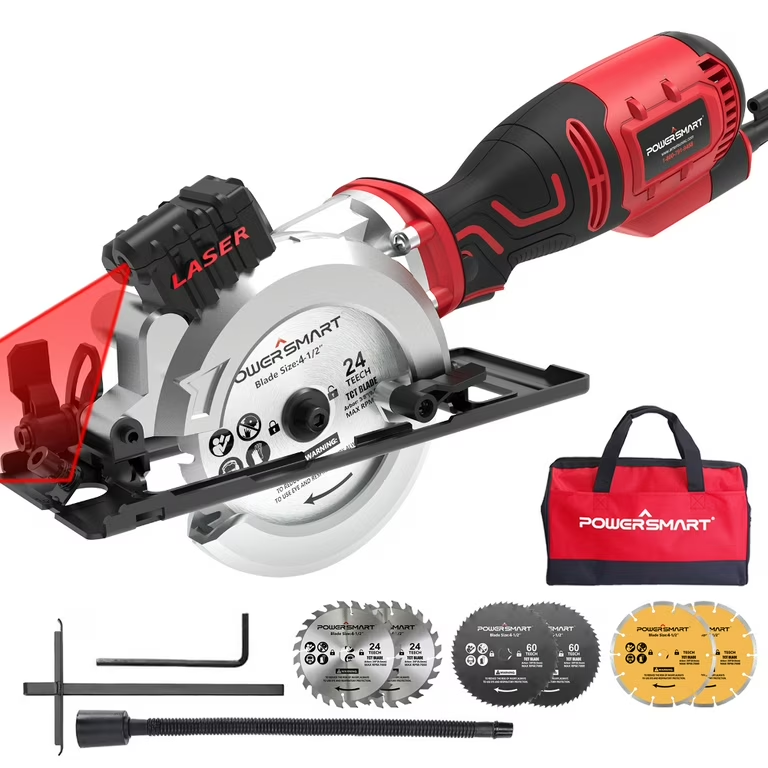
Maintenance and Care for Power Saws
Proper maintenance ensures the longevity and optimal performance of power saws. Start by establishing a regular cleaning routine after each use. Remove dust and debris from the saw’s body, vents, and moving parts using a brush or compressed air. For corded saws, inspect the power cord regularly for any signs of wear or damage. Keep blades clean and sharp, replacing them when they become dull or damaged.
Lubricate moving parts according to the manufacturer’s recommendations to reduce friction and wear. Check and tighten any loose screws or bolts periodically. For battery-powered saws, maintain the batteries by following proper charging procedures and storing them in a cool, dry place. Regularly inspect blade guards and other safety features to ensure they function correctly. Clean and oil the baseplate of circular saws to ensure smooth, accurate cuts. For table saws, wax the table surface to reduce friction and prevent rust.
Align blades and fences regularly to maintain cutting accuracy. Store power saws in a dry environment to prevent rust and corrosion. Consider having your saw professionally serviced annually, especially for heavy-use tools. Keep a log of maintenance activities and part replacements for reference. Address any unusual noises or performance issues promptly to prevent more significant problems. By following these maintenance practices, users can extend the life of their power saws and ensure consistent, safe operation.
Advanced Techniques and Tips for Power Saw Use
Mastering advanced techniques can elevate power saw use from basic cutting to precise craftsmanship. For circular saws, practice plunge cutting by tilting the saw with the blade above the work surface, then lowering it into the material. This technique proves useful for cutting openings in the middle of a workpiece. When using a jigsaw, try orbital action for faster, more aggressive cuts in wood, or switch to straight action for cleaner cuts in metal or for intricate curves.
With reciprocating saws, use a push-pull technique, allowing the weight of the saw to do much of the work. For miter saws, set up stop blocks for repetitive cuts to ensure consistency. When using a table saw, master the art of using push sticks and featherboards to maintain control and safety during rip cuts. Experiment with different blade types to achieve optimal results in various materials. For example, a fine-toothed blade produces smoother cuts in hardwoods, while a coarse-toothed blade excels in rough framing.
Learn to make bevel cuts with circular and table saws to create angled edges for joints or decorative effects. Practice making compound cuts with miter saws for complex trim work. Develop skills in freehand cutting with circular saws for rough carpentry tasks. Explore the use of guides and jigs to enhance accuracy and repeatability in cuts. By mastering these advanced techniques, users can tackle more complex projects and achieve professional-quality results with their power saws.
Power Saws in Various Industries and Applications
Power saws play crucial roles across numerous industries, adapting to specific needs and applications. In the construction industry, circular saws and reciprocating saws dominate for framing, cutting sheathing, and general carpentry tasks. Miter saws find extensive use in finish carpentry, creating precise angles for trim work and moldings. The woodworking industry relies heavily on table saws for ripping lumber and creating sheet goods, while band saws excel in resawing and curved cuts.
Furniture makers often use jigsaws for intricate cuts and scrollwork. In metalworking, specialized power saws cut through various metals, with cold saws providing precision cuts in steel and other hard materials. The automotive industry uses reciprocating saws for body work and parts removal during repairs. Landscapers and arborists depend on chainsaws for tree cutting and maintenance. The manufacturing sector employs a wide range of power saws in production lines, often integrating them into automated systems for increased efficiency.
In the shipbuilding industry, large circular saws and reciprocating saws cut through marine-grade materials. The plastic fabrication industry uses specialized saws designed to cut cleanly through various plastics without melting or chipping. Even artists and sculptors incorporate power saws into their work, using them to shape materials like wood, metal, and stone. The versatility and efficiency of power saws make them indispensable tools across these diverse industries, continually adapting to meet specific cutting needs and challenges.
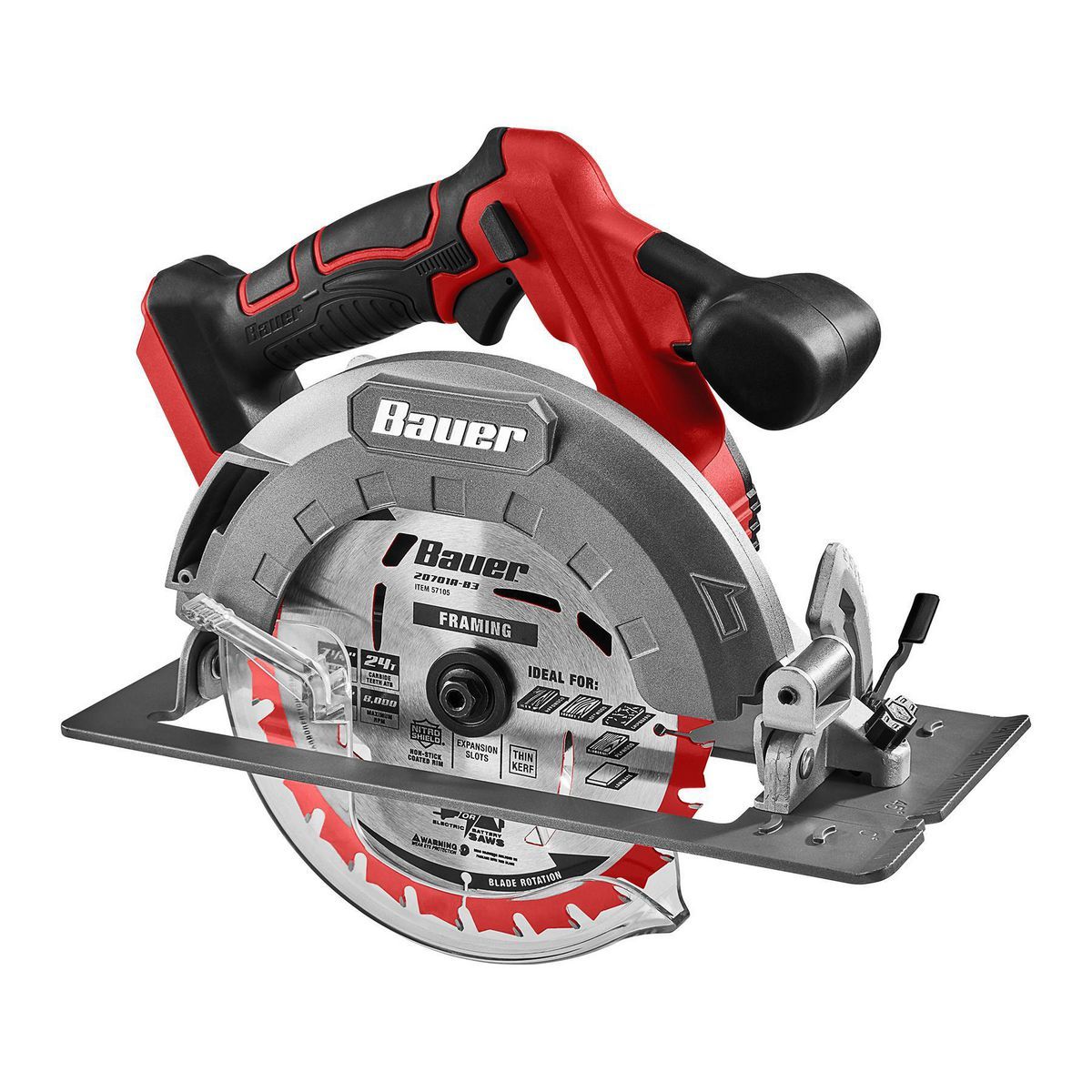
The Future of Power Saw Technology
Power saw technology continues to evolve, with innovations enhancing performance, safety, and user experience. Battery technology advancements lead to more powerful and longer-lasting cordless saws, rivaling corded models in performance. Brushless motors improve efficiency and durability, extending the life of power saws. Smart features integration allows for tool tracking, performance monitoring, and even automatic maintenance alerts through smartphone apps. Improved safety systems, such as flesh-detecting technology in table saws, reduce the risk of severe injuries.
Laser guides and LED lights become standard on many models, improving cutting accuracy and visibility. Dust collection systems grow more efficient, creating cleaner work environments and reducing health risks associated with sawdust inhalation. Ergonomic designs continue to improve, reducing user fatigue and increasing comfort during extended use. Materials science contributes to lighter yet more durable saw components, enhancing portability without sacrificing strength. Advanced blade designs and materials improve cutting performance and longevity across various applications.
Integration with other power tools and systems creates more cohesive and efficient workflows in professional settings. Virtual reality and augmented reality applications emerge for training and precision guidance in complex cutting tasks. As environmental concerns grow, manufacturers focus on developing more sustainable production methods and materials for power saws. These technological advancements promise to make power saws even more efficient, safe, and versatile in the coming years, further cementing their essential role in numerous industries and applications.
Embracing Efficiency and Precision with Power Saws
Power saws stand as testament to human ingenuity in tool design, dramatically transforming cutting tasks across various fields. These versatile tools empower users to tackle projects with unprecedented speed and accuracy. From the weekend DIY enthusiast to the seasoned professional, power saws offer solutions for a wide range of cutting needs. The efficiency gained through their use translates to significant time and labor savings, allowing for the completion of larger and more complex projects.
Moreover, the precision afforded by modern power saws enables the creation of intricate designs and perfect fits, elevating the quality of workmanship. As safety features continue to improve, power saws become more accessible to users of all skill levels, democratizing advanced cutting capabilities. The ongoing technological advancements in power saw design promise even greater improvements in performance, user comfort, and environmental sustainability.
By embracing the capabilities of power saws, individuals and industries alike can push the boundaries of what’s possible in cutting and shaping materials. Whether framing a house, crafting fine furniture, or sculpting artistic masterpieces, power saws provide the means to bring visions to life with efficiency and precision. As these tools continue to evolve, they will undoubtedly play an ever more crucial role in shaping the built environment and manufactured goods of the future.
